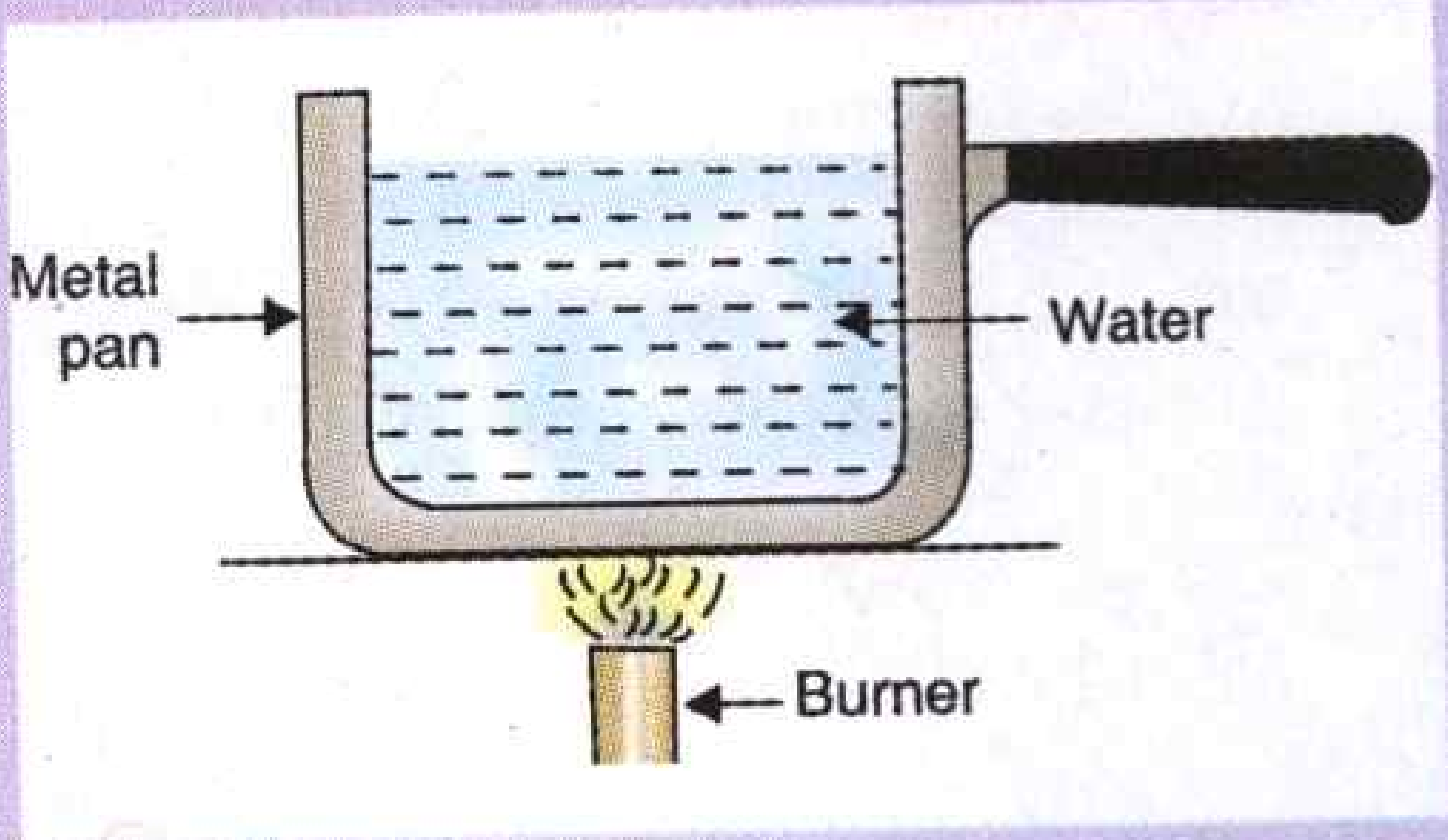Define conduction, convection, and radiation.
Step-by-Step Text Solution
1. Understanding Heat Transfer:
- Heat transfer is the process by which thermal energy moves from one object or substance to another. There are three primary methods of heat transfer: conduction, convection, and radiation.
2. Defining Conduction:
- Definition: Conduction is the process of heat transfer that occurs mainly through direct contact between materials.
- Explanation: In conduction, heat moves from the hotter part of a material to the cooler part without any movement of the material itself. For example, when a metal spoon is placed in a hot liquid, the heat from the liquid is transferred to the spoon through direct contact.
3. Defining Convection:
- Definition: Convection is the process of heat transfer that occurs mainly by the movement of medium particles.
- Explanation: In convection, warmer, less dense fluid rises while cooler, denser fluid sinks, creating a circulation pattern. This process is common in liquids and gases. For example, when water is heated in a pot, the hot water at the bottom rises to the top, while cooler water descends to the bottom, creating a convection current.
4. Defining Radiation:
- Definition: Radiation is the process of heat transfer that occurs mainly through thermal emission.
- Explanation: Unlike conduction and convection, radiation does not require a medium; it can occur in a vacuum. Heat is transferred in the form of electromagnetic waves, such as infrared radiation. An example of radiation is the warmth felt from the sun, which travels through the vacuum of space to reach the Earth.
Final Definitions:
- Conduction: The process of heat transfer mainly by direct contact.
- Convection: The process of heat transfer mainly by movement of medium particles.
- Radiation: The process of heat transfer mainly by thermal emission.
---
- Heat transfer is the process by which thermal energy moves from one object or substance to another. There are three primary methods of heat transfer: conduction, convection, and radiation.
- Definition: Conduction is the process of heat transfer that occurs mainly through direct contact between materials.
- Explanation: In conduction, heat moves from the hotter part of a material to the cooler part without any movement of the material itself. For example, when a metal spoon is placed in a hot liquid, the heat from the liquid is transferred to the spoon through direct contact.
- Definition: Convection is the process of heat transfer that occurs mainly by the movement of medium particles.
- Explanation: In convection, warmer, less dense fluid rises while cooler, denser fluid sinks, creating a circulation pattern. This process is common in liquids and gases. For example, when water is heated in a pot, the hot water at the bottom rises to the top, while cooler water descends to the bottom, creating a convection current.
- Definition: Radiation is the process of heat transfer that occurs mainly through thermal emission.
- Explanation: Unlike conduction and convection, radiation does not require a medium; it can occur in a vacuum. Heat is transferred in the form of electromagnetic waves, such as infrared radiation. An example of radiation is the warmth felt from the sun, which travels through the vacuum of space to reach the Earth.
- Conduction: The process of heat transfer mainly by direct contact.
- Convection: The process of heat transfer mainly by movement of medium particles.
- Radiation: The process of heat transfer mainly by thermal emission.
Topper's Solved these Questions
- TRANSFER OF HEATBOOK - CENGAGE PHYSICSCHAPTER - TRANSFER OF HEATEXERCISE - OLYMPIAD AND NTSE LEVEL EXERCISES
10 Videos
- TRANSFER OF HEATBOOK - CENGAGE PHYSICSCHAPTER - TRANSFER OF HEATEXERCISE - MANDATORY EXERCISE (Exercise set II)
15 Videos
- STATIC ELECTRICITYBOOK - CENGAGE PHYSICSCHAPTER - STATIC ELECTRICITYEXERCISE - OLYMPIAD AND NTSE LEVEL EXERCISES
10 Videos
Similar Questions
Conduction, convection, and radiation are
View SolutionWhat are the basic differences between , conduction, convection and radiation?
View SolutionWhat are the differences between conduction, convection and radiation?
View SolutionLook at the Figure given alongside. Mark where the heat is being transferred by conduction, by convection, and by radiation.

View SolutionLook at Figure. Mark where the heat is being transferred by conduction, by convection and by radiation.

View SolutionTemperature ,conduction ,convection, radiation.
View SolutionConduction, convection, insulation, radiation.
View SolutionChoose odd one out. Conduction, convection, insulation, radiation.
View SolutionHeat Transfer| conduction | convection | radiation | thermal combination
View SolutionTransfer Of Heat: Radiation|Difference Between Conduction, Convection And Radiation|OMR
View Solution
